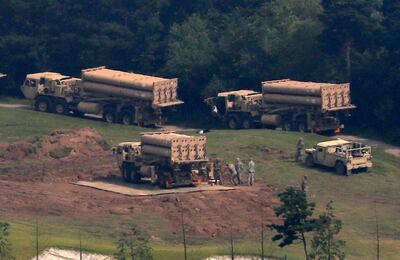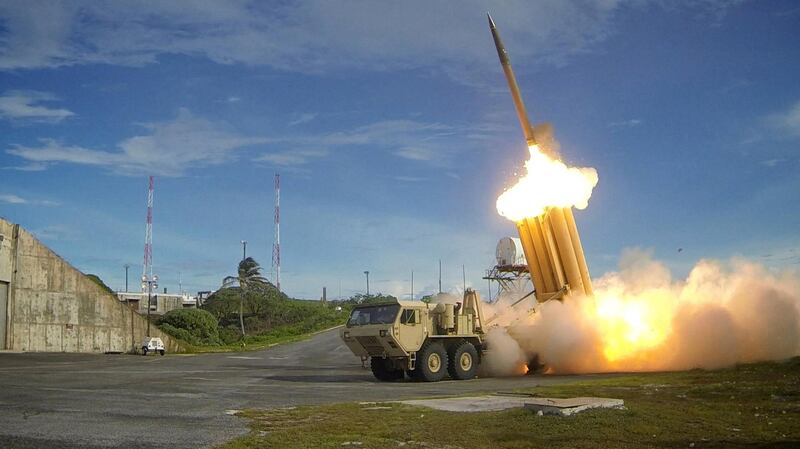Saudi Arabia is set to buy a new $15 billion (Dh 55 billion) missile defence system from US defence giant Lockheed Martin, a State Department official has said.
The State Department said the Saudis and US officials signed the letters of offer and acceptance documents on Monday, formalising terms for Saudi’s purchase of 44 Terminal High Altitude Area Defence (THAAD) launchers, missiles and related equipment.
The deal has been under discussion since 2016 but is now completed, a US State Department spokesman told reporters anonymously. Congress approved the sale in 2017.
A Saudi official told Reuters in October that Mr Trump and King Salman discussed the deal the previous month in a phone call and that the deal could be completed by the end of the year.
The deal was one of a small number of agreements under the much-touted $110 billion arms package that has progressed to completion.
In recent weeks, the administration of President Donald Trump and the US defence industry have worked to defend the deal under increasing scrutiny of the US-Saudi relationship after the murder of journalist Jamal Khashoggi.
Defying the White House, the Senate voted on Wednesday to hold a debate and vote on US military support for the Saudi-led coalition in Yemen, possibly within days.
Secretaries of State and Defence, Mike Pompeo and James Mattis, briefed the Senate in a closed session on Wednesday and urged them to reject the bid.
______________
Read more:
Senate agrees to debate US Role in Yemen war
Iran threatens missile strikes on Al Dhafra and other US bases
Iran developing new missile capabilities, US researchers say
______________
“The suffering in Yemen grieves me, but if the United States of America was not involved in Yemen, it would be a hell of a lot worse. What would happen if the US withdrew from the Yemen effort? Guess what: the war wouldn’t end," Mr Pompeo told the Senate.
The State Department official who announced the completion of the THAAD deal said the US supports the “long-term security of Saudi Arabia and the Gulf region in the face of the growing ballistic missile threat from the Iranian regime and Iran-backed extremist groups”.
Iranian-backed Houthi rebels have fired hundreds of ballistic missiles at Saudi cities this year alone, causing numerous casualties and a number of fatalities.

Saudi Arabia currently has Patriot missile defence systems in place and they regularly intercept Houthi projectiles.
The Patriot missile defence system, known as PAC-3, intercepts missiles at a much lower altitude to the THAAD system and is considered to be a medium-tier defensive shield system.
As well as the threat from the rebels on their southern border, last week Iran’s Revolutionary Guard head of airspace division, Amirali Hajizadeh, warned that US bases and allies across the Gulf region were well within range of new, more sophisticated Iranian missiles. Other Iranian officials have directly warned that the Gulf could be a target if there was an armed conflict with the US.
The UAE already operates two THAAD defence systems and in October Lockheed Martin was tapped for the $129.5 million (Dh 475 million) contract to maintain the systems, including “software and hardware development, contractor logistics support, engineering services, and missile field surveillance.






